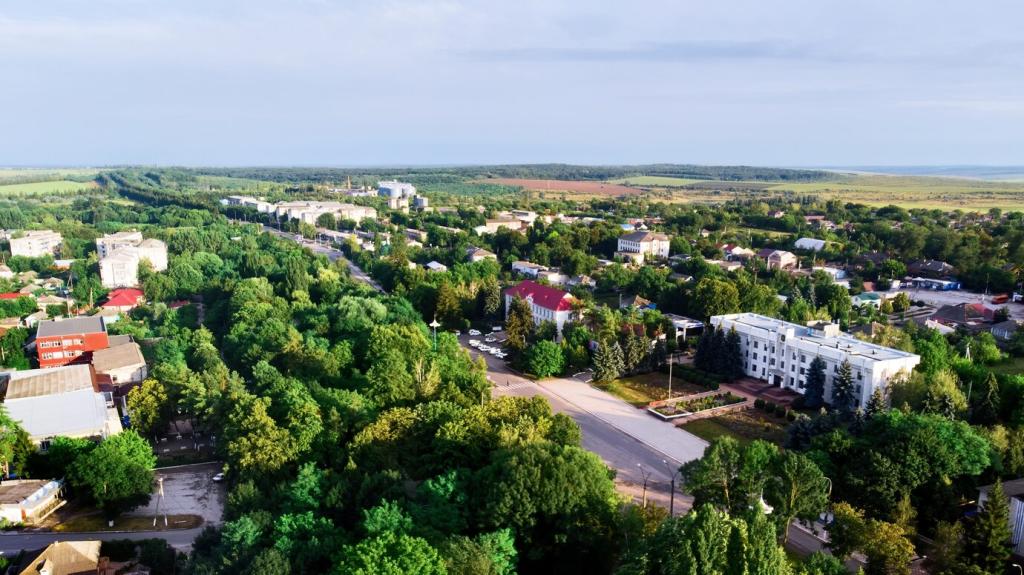Emerging Real Estate Markets in Top Vacation Spots
Economic Drivers Behind Vacation Market Growth
Infrastructure and Accessibility Improvements
Significant investments in infrastructure, such as new airports, improved road networks, and advanced public transportation, are major catalysts for the popularity of emerging vacation destinations. These improvements reduce travel time and enhance the overall experience for both tourists and potential property buyers. Accessibility is a critical consideration—when an area becomes easier to reach, its appeal skyrockets, stimulating property demand and price appreciation. For investors, this means that early entry into such markets can yield substantial returns as accessibility draws more visitors and drives up real estate values.
Economic Diversification and Stability
The stability and diversification of a region’s economy can greatly impact its real estate prospects. Emerging vacation markets often benefit when local governments actively nurture alternative industries, such as ecotourism, technology, or creative arts, alongside traditional tourism sectors. Strong economic foundations can reassure investors and vacation home seekers that their property will hold or increase its value over time. Destinations that foster a robust and resilient economy attract a different caliber of property buyer: one interested not only in lifestyle but also in long-term asset growth.
Favorable Exchange Rates and Currency Trends
Currency advantages can provide additional incentives for international real estate buyers. When an emerging vacation market aligns with favorable exchange rates, foreign investors stand to maximize their purchasing power and capital gains. Savvy investors watch global currency trends to identify times and places where their money will stretch further, making destinations with weaker currencies compared to the buyer’s home country especially attractive. Persistent trends in favorable rates can ignite rapid growth and encourage further international investment in the region.
Rise of Remote and Flexible Work
The shift towards remote work has enabled buyers to spend extended periods away from traditional urban centers. Many professionals now seek vacation homes that serve as both an escape and a productive workplace. This is driving interest in destinations that offer reliable internet connectivity, peaceful environments, and proximity to nature. Markets catering to the “digital nomad” lifestyle are experiencing unprecedented growth as buyers seek a better work-life balance without sacrificing professional obligations.
Emphasis on Wellness-Oriented Living
Health and wellness have become top priorities for vacation property buyers. Demand is increasing in destinations known for clean air, access to outdoor activities, and wellness-oriented amenities such as spas, yoga studios, and organic food markets. Properties that promote mental and physical well-being—through both their design and their natural surroundings—appeal to buyers who view their vacation home as a sanctuary. As a result, regions investing in wellness infrastructure are drawing attention from both luxury and mainstream markets.
Interest in Sustainable and Eco-Friendly Developments
Today’s buyers are also more environmentally conscious, seeking out properties built with sustainable materials and energy-efficient technologies. Eco-friendly real estate is gaining momentum, especially in destinations where natural beauty must be preserved to maintain the area’s allure. Markets that prioritize green building standards, renewable energy sources, and responsible land use are distinguishing themselves as forward-thinking. Developers in these regions are responding by offering innovative options that appeal to this growing segment of the buyer pool.
Investment Potential and Profitability
01
Strong Demand for Vacation Rentals
Short-term rental platforms have revolutionized how travelers book accommodations, fueling demand for vacation properties in ascending markets. Owners can generate significant income by renting out their property to tourists seeking unique and affordable experiences. High occupancy rates, especially during peak seasons, drive attractive returns compared to traditional residential leasing. As the tourism infrastructure improves, these rental properties become even more desirable, positioning early investors for financial success.
02
Upside from Early Market Entry
Entering a market in its early growth stages often results in the highest appreciation potential. As word spreads and more investors flock to a new destination, property values tend to rise rapidly. Early adopters benefit not just from price appreciation but also from being able to select prime locations and properties within the region. Identifying these opportunities requires careful analysis of local conditions, government plans, and tourism statistics—but the rewards for those who act decisively can be considerable.
03
Resale Value and Exit Strategies
Sound investment also means planning for an eventual exit. Vacation properties in established and emerging markets alike are subject to fluctuations in buyer interest and macroeconomic factors. However, emerging destinations with rising profiles and increasing tourist numbers often present favorable resale conditions. Successful investors consider not only current rental yields and appreciation rates but also future demand trends to maximize profits when the time comes to sell.
Legal Considerations for Foreign Buyers
01
Many popular vacation spots have specific restrictions regarding foreign ownership, such as limitations on land purchase, property types, or buyer eligibility. Conducting thorough due diligence before entering a market is essential, as local laws may prohibit certain transactions or require local partnership structures. Buyers should engage experienced legal counsel or local real estate professionals to guide them through the nuances of property ownership, ensuring compliance and reducing the risk of complications or penalties.
02
Some countries offer residency or special visa incentives to foreign property buyers, making emerging vacation markets even more attractive. These programs may provide residency status, long-term visas, or even citizenship in exchange for qualifying real estate investments. Understanding the requirements and benefits of these programs can open additional avenues for buyers seeking more permanent ties to their chosen destination. However, it is important to remain aware of evolving regulations and ensure all documentation is accurate and up-to-date.
03
Tax regimes for foreign property owners differ widely, encompassing aspects like property taxes, rental income taxes, and capital gains. Failure to understand and adhere to local and home country tax laws can lead to significant fines and legal issues. Investors must familiarize themselves with reporting obligations, potential double taxation agreements, and any tax incentives available to foreign owners. Professional tax advice, both locally and internationally, is often a wise investment to safeguard returns and legal standing.
Spotlight on Up-and-Coming Coastal Escapes
As famous islands reach saturation, emerging island markets are gaining attention for their unspoiled environments and attractive pricing. These destinations often feature pristine beaches, vibrant marine ecosystems, and a slower pace of life that appeals to both investors and vacationers. Early buyers in these regions can secure premium properties before prices escalate, enjoying both personal retreats and the potential for strong rental income as the destination’s popularity grows.


Challenges Facing Emerging Markets
Volatility and Market Uncertainty
Emerging markets are more susceptible to fluctuations caused by changing travel trends, global economic conditions, and local instability. Unlike mature vacation destinations, these markets can experience rapid shifts in demand, pricing corrections, or even sudden slides if external factors such as pandemics, political changes, or natural disasters strike. Investors must be vigilant and diversified, bearing in mind that returns may not always be linear or predictable in these dynamic environments.


Successful identification of promising markets starts with an assessment of local tourism indicators. Data such as visitor numbers, length of stay, and occupancy rates provide valuable insights into market dynamics. Additionally, the presence of recurring events, new attractions, or promotional efforts may signal a destination’s upward trajectory. Investors who prioritize data-driven decision-making are more likely to surface under-the-radar opportunities before wider recognition and price escalation take hold.

On-the-ground insights can prove invaluable in navigating emerging markets. Establishing relationships with trusted real estate agents, property managers, and community leaders helps uncover unique opportunities, avoid common pitfalls, and better evaluate the area’s true potential. Local partners can provide context unattainable from afar, such as neighborhood reputations, planned infrastructure upgrades, or new zoning regulations. Deep local knowledge rounds out the quantitative analysis, providing a holistic perspective on market viability.

Assessing government strategies and private sector plans is vital for understanding a region’s growth prospects. Markets with clear visions for sustainable tourism, infrastructure expansion, and community development tend to offer better investment security. Evaluating master plans, economic incentives, and government initiatives provides critical clues about future demand and property appreciation potential. Astute investors look beyond immediate trends to consider how planned developments will enhance quality of life and attract future buyers.
